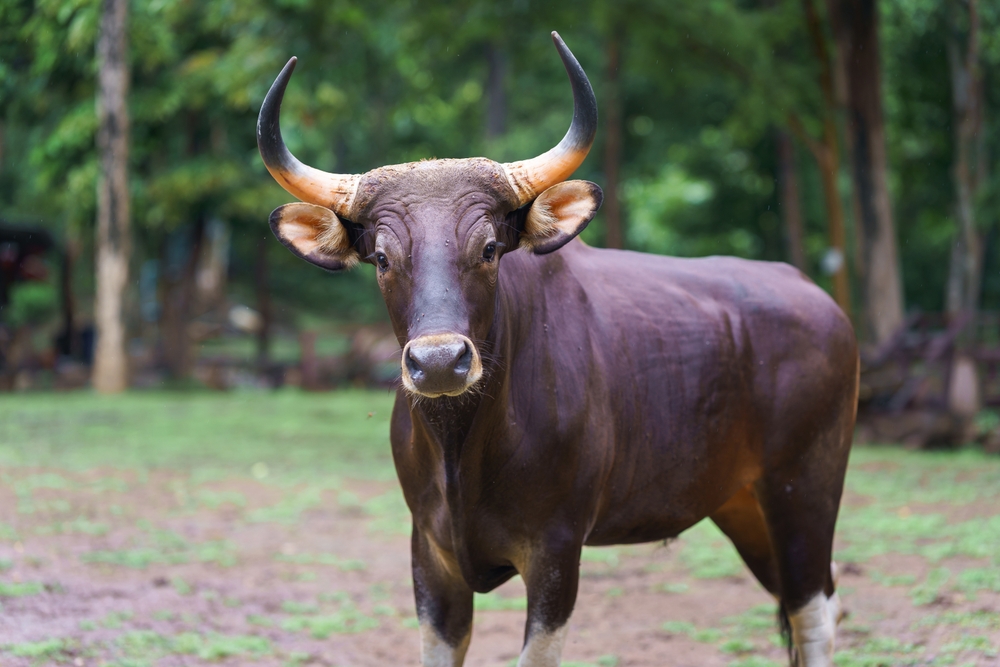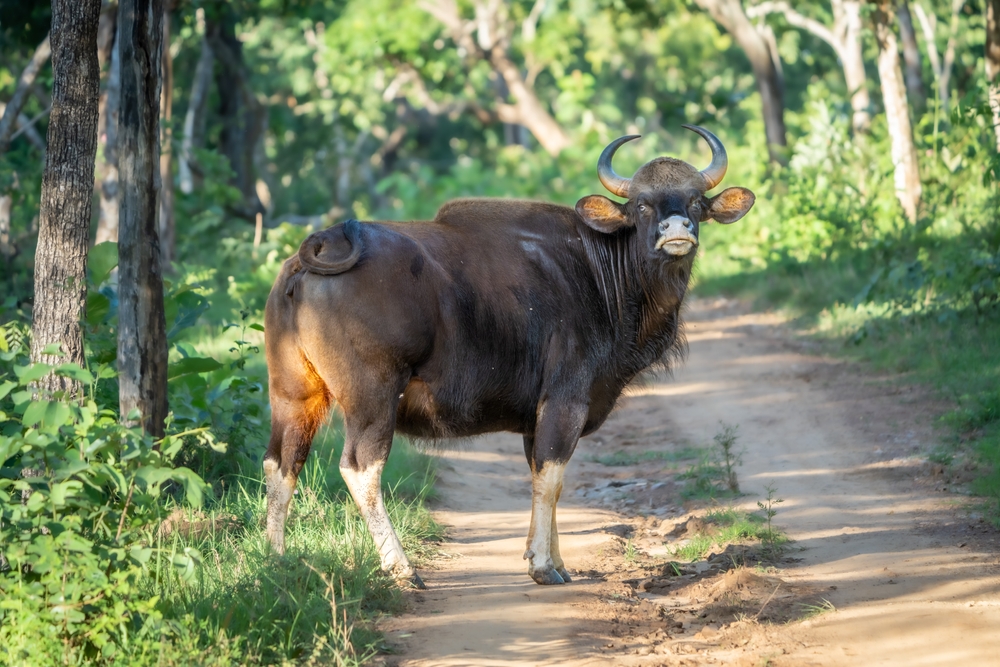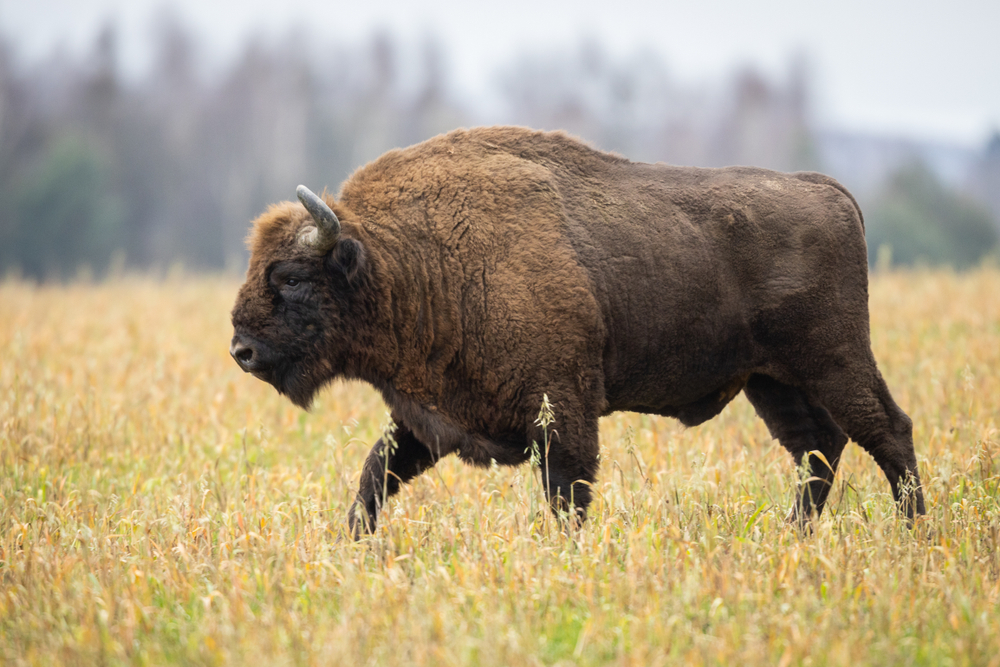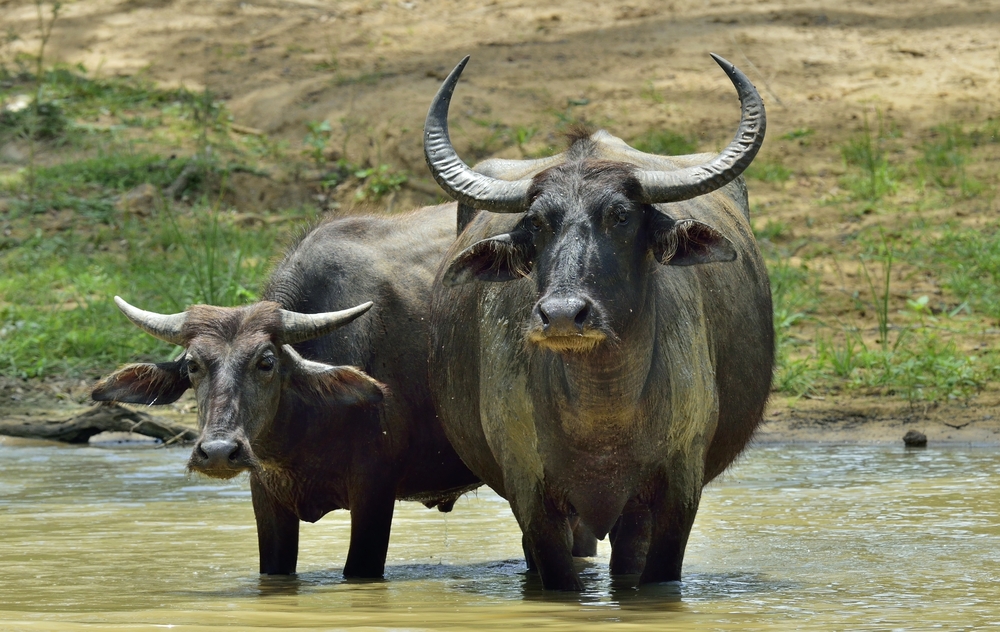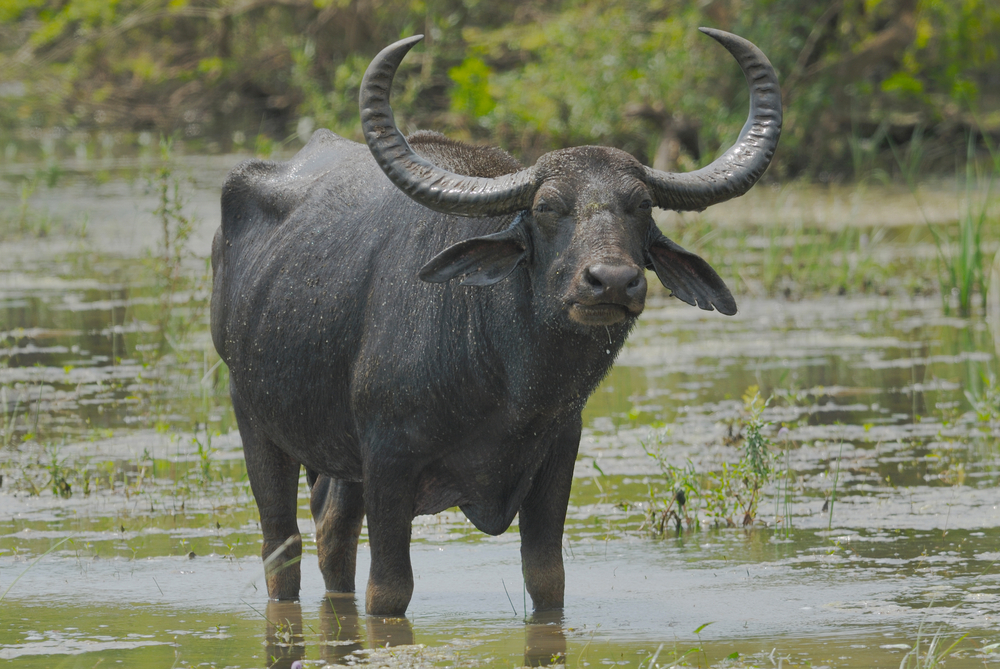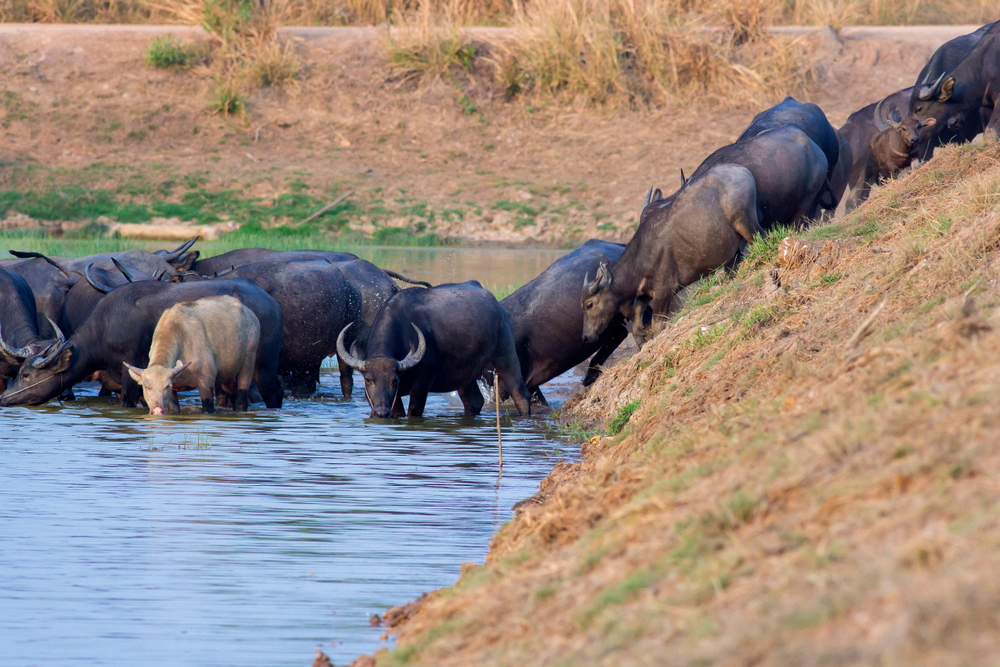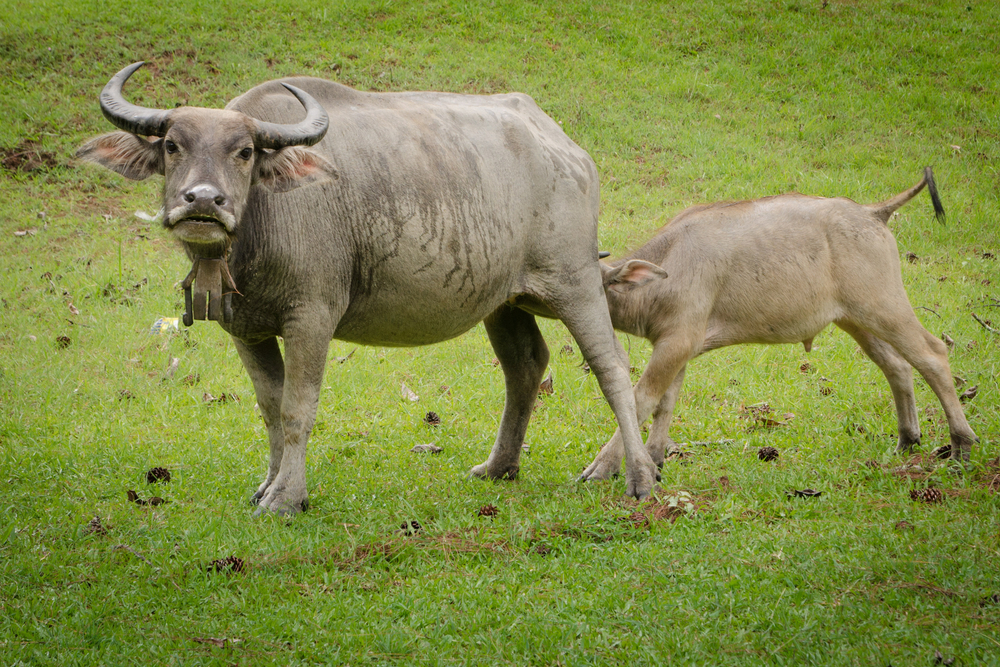The water buffalo of Asia and the buffalo of Africa, often referred to as the African buffalo or Cape buffalo, are two distinct species with several differences:
- Species:
- Water Buffalo (Bubalus bubalis): Native to Asia, Europe, and some parts of Africa and the Americas, the water buffalo is a domesticated bovid species with both domesticated and wild populations. It has several subspecies, each with specific characteristics.
- African Buffalo or Cape Buffalo (Syncerus caffer): Native to sub-Saharan Africa, the African buffalo is a wild bovid species. It is a large, powerful, and robust animal that is known for its unpredictable behavior.
- Habitat:
- Water Buffalo: Water buffaloes are adapted to wetland habitats and are often found near rivers, swamps, and lakes. They are well-suited for semi-aquatic environments and enjoy wallowing in mud.
- African Buffalo: African buffaloes inhabit a wide range of ecosystems in sub-Saharan Africa, including grasslands, savannas, woodlands, and wetlands. They are more terrestrial and less adapted to aquatic environments than water buffaloes.
- Physical Characteristics:
- Water Buffalo: Water buffaloes are known for their large, curved horns, which vary in shape among different subspecies. They have robust bodies, wide hooves for walking in muddy terrain, and a distinct hump in some subspecies.
- African Buffalo: African buffaloes have characteristic, massive, and robust bodies with curved horns that are fused at the base, forming a broad shield known as a boss. They lack the hump seen in some water buffalo subspecies.
- Social Behavior:
- Water Buffalo: Water buffaloes often form herds led by a dominant female. They are social animals and display strong social bonds within the group, both in domesticated and wild populations.
- African Buffalo: African buffaloes are known for their group behavior and live in herds that can range from a few individuals to large groups. They have a hierarchical social structure and often exhibit cooperative defense against predators.
- Domestication:
- Water Buffalo: Water buffaloes have been domesticated for various purposes, including agriculture, milk production, meat, and transportation. Domesticated water buffaloes are found worldwide.
- African Buffalo: African buffaloes are wild animals and have not been domesticated to the same extent as water buffaloes. They are primarily found in the wild.
In summary, the primary differences between the water buffalo of Asia and the African buffalo of Africa lie in their species, habitat preferences, physical characteristics, social behavior, and domestication status. While water buffaloes are often domesticated and adapted to wetland habitats, African buffaloes are wild animals that inhabit a variety of ecosystems in Africa.







































































